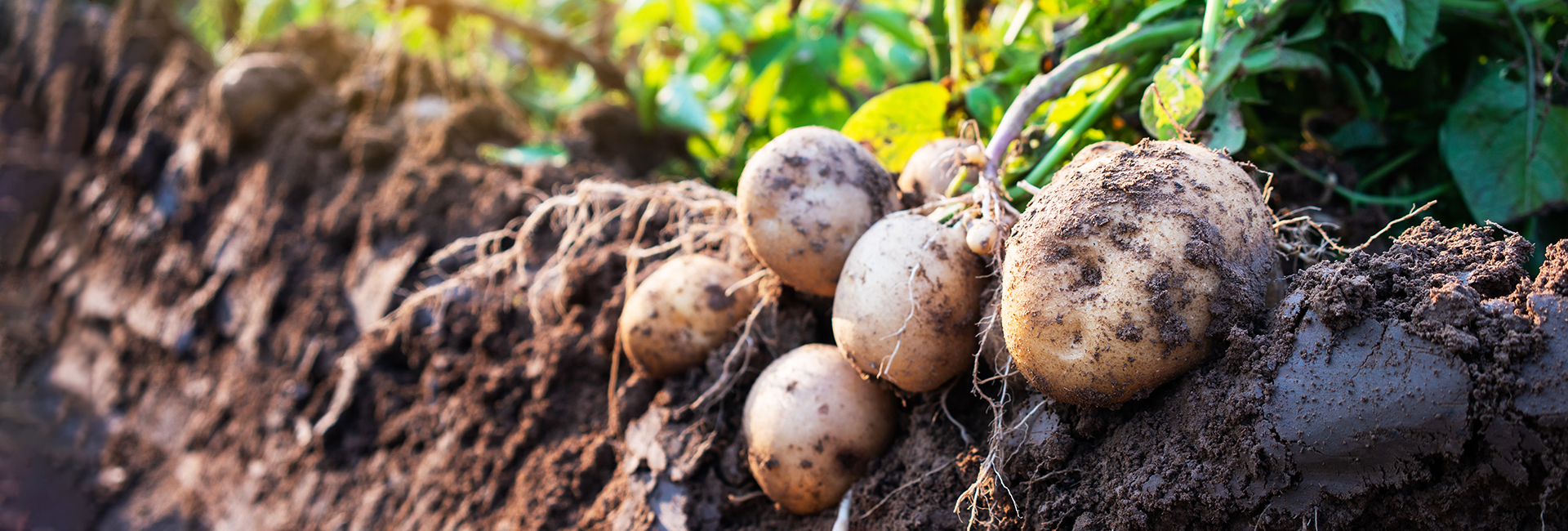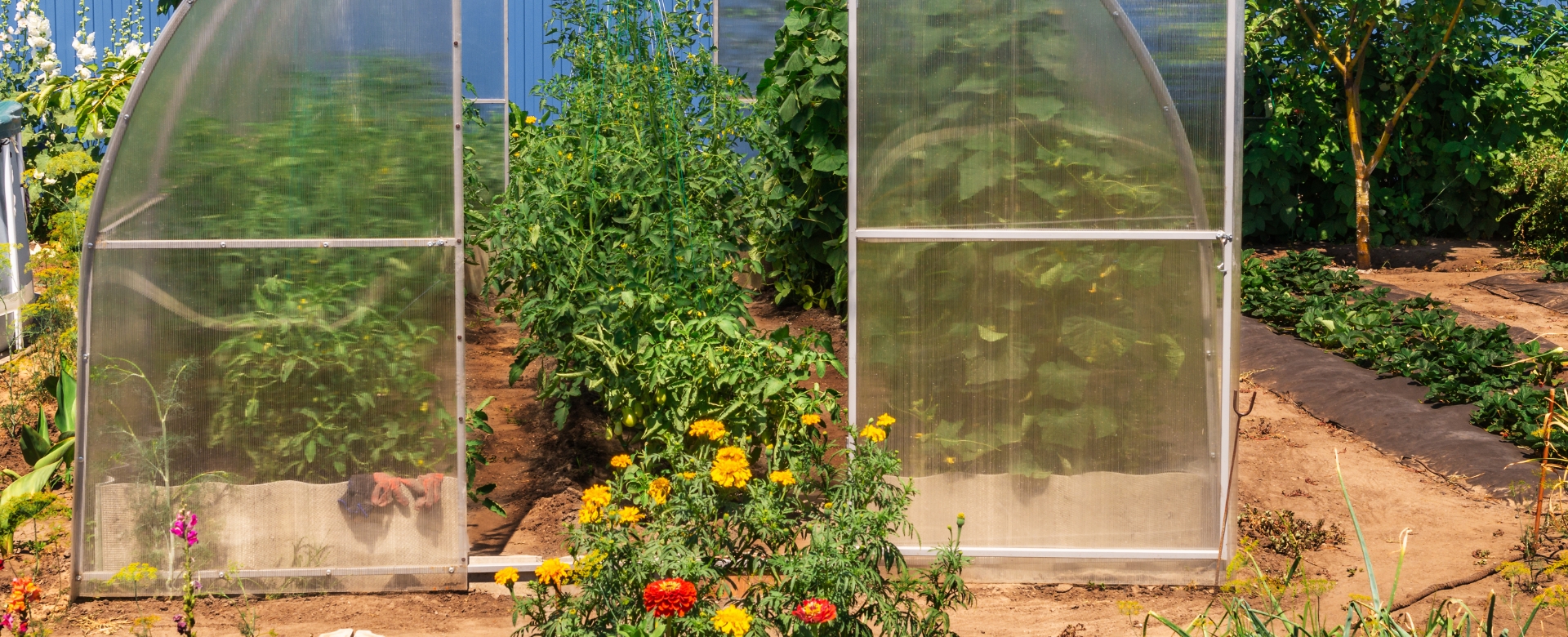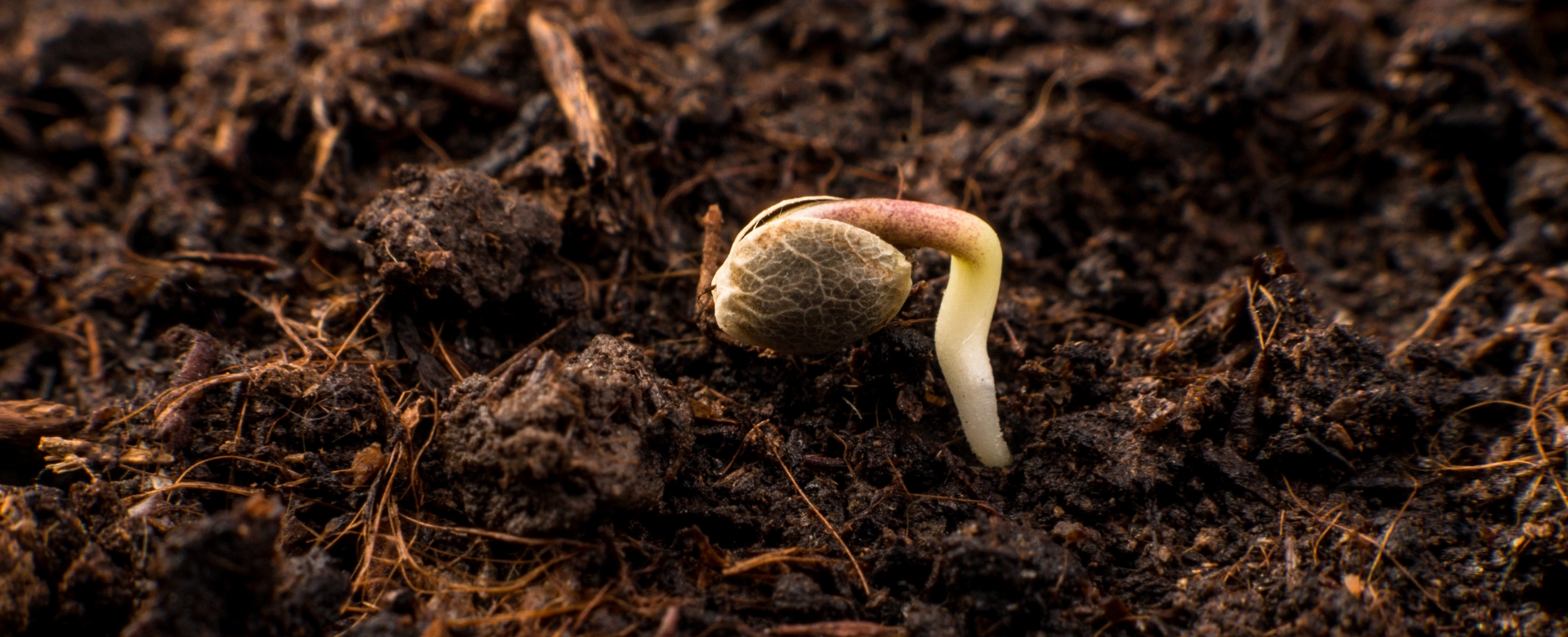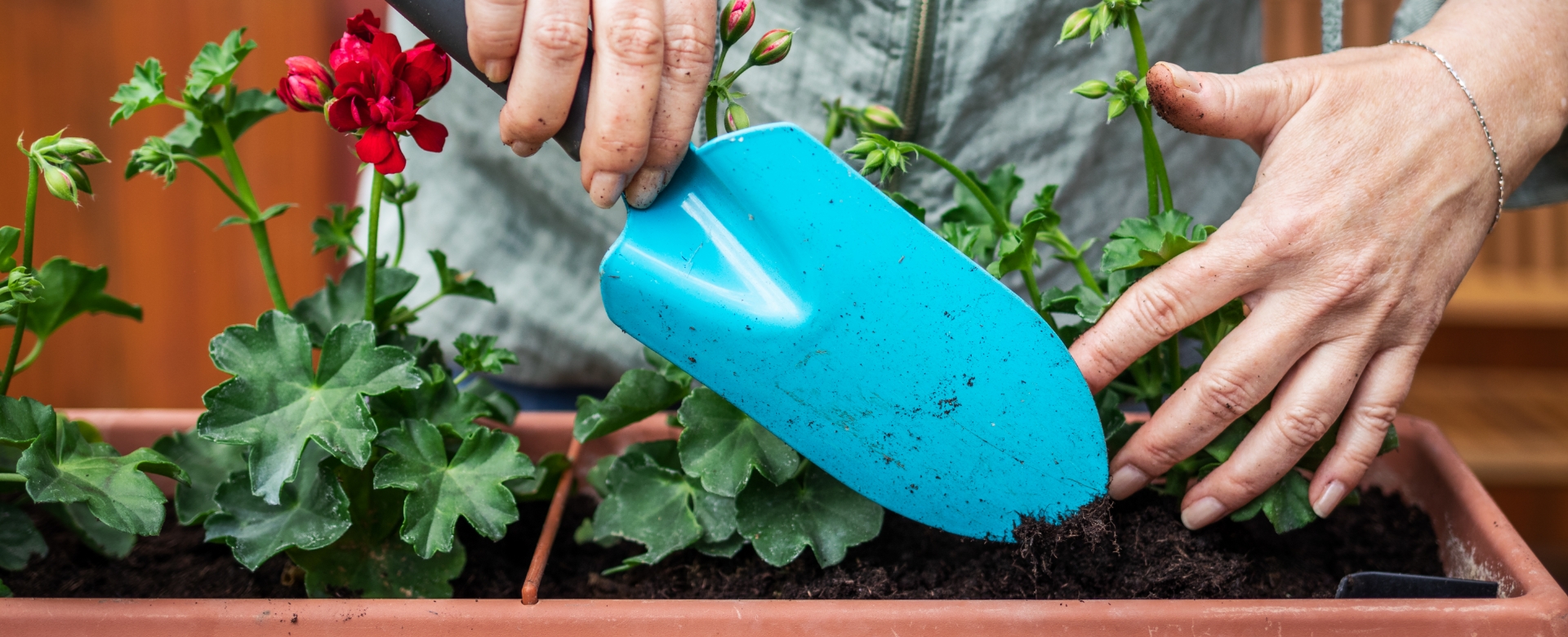Potatoes are a favorite for gardeners because they’re versatile in the kitchen and can even be helpful when you’re feeling under the weather. Imagine making a yummy loaded baked potato and also using one to ease a cold!
If you want to improve potatoes growth, you can consider planting them in raised beds.
Raised beds are great for growing potatoes, as they can grow well in loose, well-draining soil.
Growing potatoes in raised beds offers a plethora of benefits. One main benefit is that it keeps weeds away, as the beds are elevated off the ground. Planting potatoes in raised beds promises an excellent yield and might be easier to work with than keeping them straight in the ground.
Best Raised Beds for Gardening
Selecting the best-raised beds for gardening depends on space, budget, and personal preference. Options include wooden raised beds, galvanized metal raised beds, plastic raised beds, stone/concrete raised beds, fabric raised beds, and composite raised beds.
Key Considerations to Choose the Best Raised Beds for Gardening
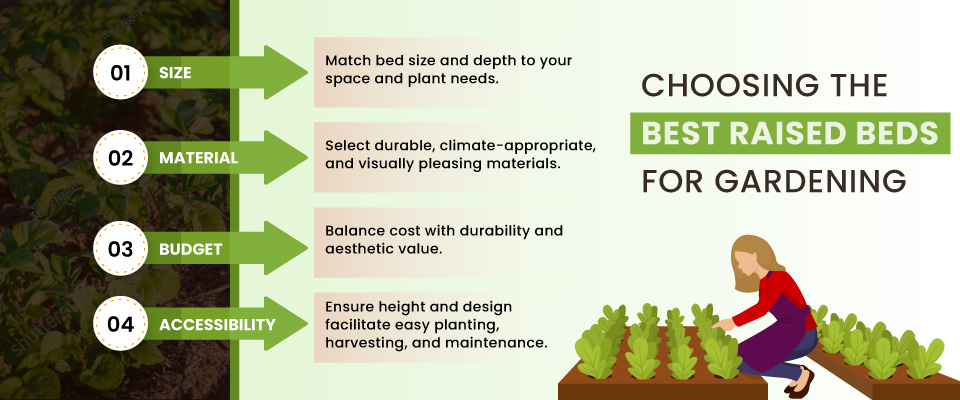
1. Size: Consider the size of the raised bed, available space, and the depth required for the plants to grow.
2. Material: Choose material based on your location’s durability, aesthetics, and climate conditions.
3. Budget: Balance initial cost with long-term durability, aesthetics, and climate conditions.
4. Accessibility: Ensure the height and design suit your gardening requirements, including ease of access for planting, harvesting, and maintenance.
Selecting the best-raised beds for potatoes involves evaluating essential factors to find the best option for your gardening goals.
What’s the Best Sized Raised Bed for Growing Potatoes?
The ideal size of raised beds for growing potatoes largely depends on the soil conditions, available space, yield requirements, etc. However, a square or rectangular raised bed of 3 ft x 4 ft or 4 ft x 4 ft is perfect for potato cultivation. This recommended size is suitable considering the accessibility of the innermost potato plants.
However, it depends on the plants you decide to grow. For vegetable plants or plants that need dry soil, the depth of raised beds should be 12-18 inches. The size requirement of raised beds is subject to change depending on the plant you decide to grow in it.
How Many Potatoes Can You Grow in One Raised Bed?
The number of potatoes you can produce in one raised bed is based on factors like the bed size, the variety of potatoes, and the plant care provided to them.
If we consider a raised garden bed of 4 x 8 feet size, then it can produce about 2 to 5 pounds of potatoes, based on the variety of potatoes and growing conditions.
How to Harvest and Preserve Potatoes Correctly?
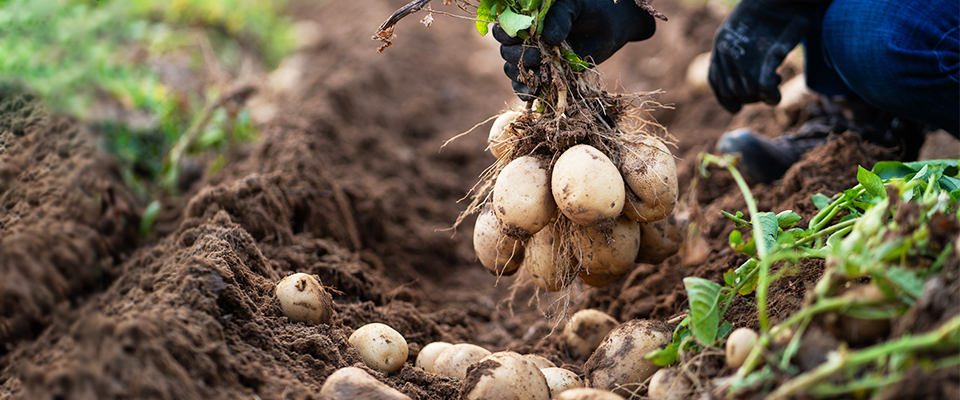
Harvesting Potatoes
Follow the correct procedure to harvest potatoes effectively and reap maximum benefits out of it. For mature potatoes, harvest them when their foliage turns yellow and starts to die back. This happens usually 2-3 weeks after the plants have flowered. For new potatoes, harvest early when they are still green and flowering to get small, tender potatoes.
For harvesting potatoes, use a spade or garden fork to lift the plants and avoid damaging the tubers gently. Dig around the plant and lift tubers from the soil. Start digging from the edges of the raised beds and gradually work your way in to avoid damaging the potatoes.
Brush off excess soil and avoid washing potatoes, as moisture can cause rot. Discard damaged or diseased potatoes.
Preserving Potatoes
You can cure potatoes to preserve them and retain their freshness for a long time. This process involves laying potatoes in a dark and well-ventilated area at 45-60°F and humidity of 85-95% for about 1-2 weeks. It hardens the skin and heals minor cuts.
Store potatoes in a cool, dark, humid place, ideally at 35-40°F with 85-90% humidity. Use breathable containers like mesh bags, burlap sacks, or wooden crates for proper air circulation. Make it a point to regularly check potatoes for signs of spoilage and remove soft, sprouted, and shriveled potatoes.
Benefits of Harvesting and Preserving Potatoes
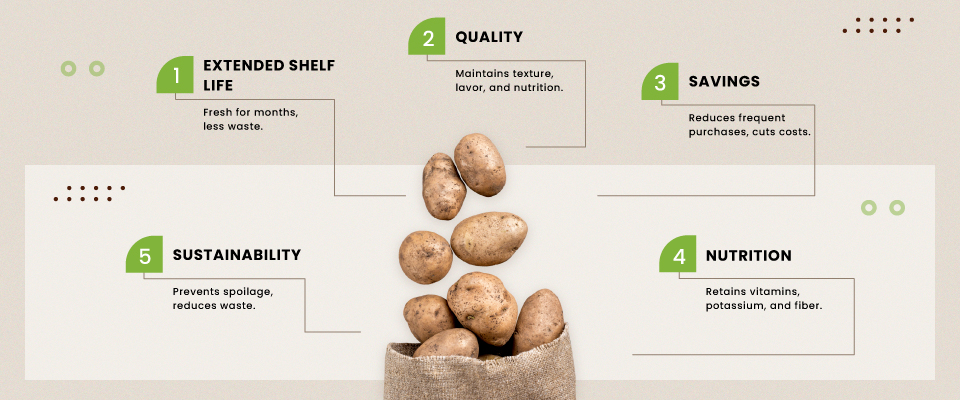
There are several benefits you get by harvesting and preserving potatoes correctly:
1. Extended Shelf Life – Proper curing and storage keep potatoes fresh for several months, thereby reducing waste and ensuring a steady supply.
2. Quality Retention – You can maintain potatoes’ texture, flavor, and nutritional value with correct harvesting and preservation.
3.Cost Savings – Storing your potatoes reduces the need to buy potatoes frequently, leading to cost savings.
4. Nutritional Benefits – Potatoes are good sources of Vitamins (B6 & C), Minerals (Potassium), and dietary fiber, which can be preserved through proper storage.
5. Reduced Waste – Properly storing potatoes can reduce the risk of spoilage and the need to discard tubers, promoting sustainability.
Difference of Growing Potatoes in Raised Beds Vs In-ground Growing
| Factor | Raised Beds | In-ground Growing |
|---|---|---|
| Space Utilization | Ideal for limited spaces, suitable for small-scale gardening | Ideal for larger areas, suitable for extensive farming |
| Soil | Warms up faster in spring, suitable for early planting | Warms up slowly in spring |
| Moisture Retention | Dries up quickly | Better moisture retention capacity |
| Water | Requires more frequent watering | Requires less frequent watering |
| Drainage | Has better drainage capacity which reduces risk of waterlogging | Has natural draining capacity which may vary depending on soil type |
| Pests & Diseases | Easy to manage soil-borne pests and diseases with barriers | More susceptible to soil-borne pests and diseases |
| Accessibility | Easy to access for planting and harvesting potatoes | Harder to reach, requires bending or kneeling |
| Maintenance | Easy to maintain and harvest | Requires more physical effort like kneeling or bending |
Benefits of Growing Potatoes in Raised Beds
Raised beds are best for gardening as they help maximize your garden space. Growing potatoes in raised beds can be easy and rewarding. Raised beds are suitable for growing potatoes as they thrive well in loose and well-draining soil.
Let us learn about the benefits of growing potatoes in raised beds:
- Raised beds keep weeds at bay as the beds are elevated off the ground.
- You don’t have to get bothered about the soil compaction or no need to dig deep when harvesting.
- The soil in raised beds gets warm faster in springtime owing to its direct exposure to the sun, which creates ideal conditions for planting potatoes early.
- The soil in garden beds is loose and well-draining, so you need not worry about over-watering or overwinter crop protection.
- Raised bed gardening makes it easy to harvest potatoes. Potato roots tend to be closer together and more compact in raised beds than in traditional gardens.
Owing to the benefits mentioned above, it is no wonder that several gardeners choose raised beds to grow potatoes.
When To Grow Potatoes in Raised Beds?
Plant seed potatoes in raised beds in the spring between two weeks before the last frost date and three weeks after the last frost date in your location. This gives sufficient time for potatoes to establish before the growing season. When planting potatoes in raised beds, ensure the soil temperature is at least 45°F.
11 Best Tips for Growing Potatoes in Raised Bed
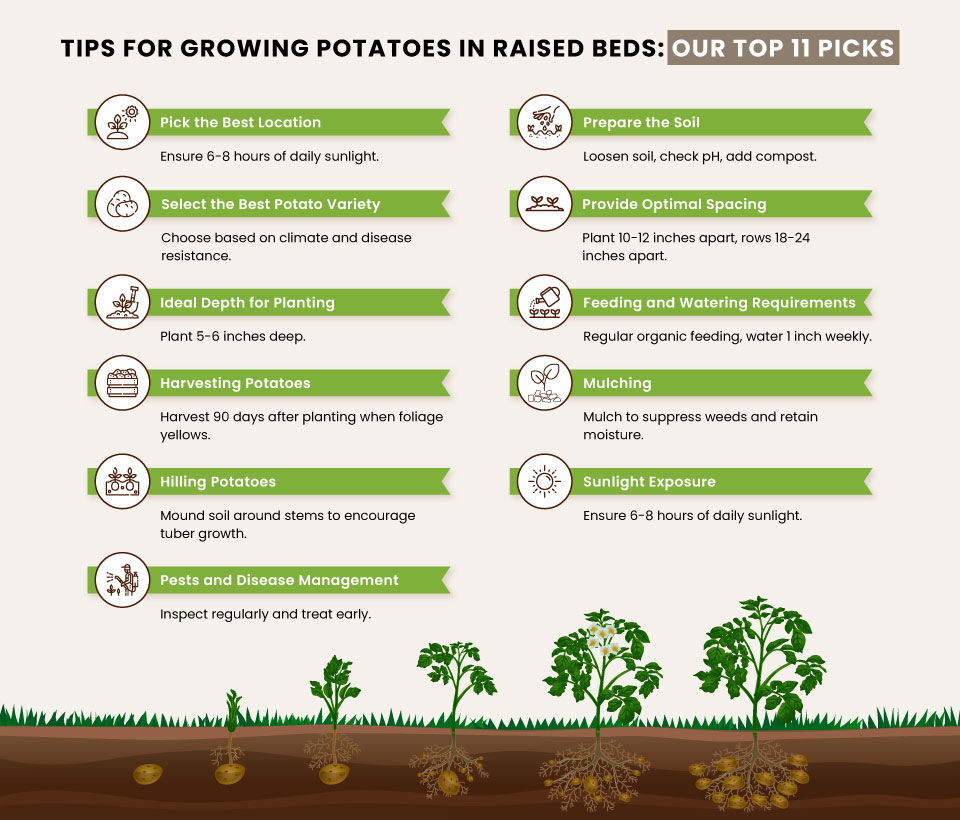
1. Pick the Best Location
Selecting the best location for raised beds for growing potatoes is essential. Ensure the area receives at least 6-8 hours of direct sunlight daily. Sunlight plays a crucial role in photosynthesis; therefore, it becomes necessary to ensure that potato plants receive sufficient sunlight. It leads to healthy leaves and strong stems, which are essential for the healthy growth of potatoes.
2. Prepare the Soil
Before planting potatoes, ensure the soil is adequately prepared for optimal growth. Loosen the soil and check its pH levels. Aim for a pH range of 6-7. Add lime or sulfur if the soil is too acidic or alkaline. If it is not acidic, add peat moss or pine needles.
Once the pH levels reach appropriate levels, add enough compost or aged manure into the soil. It provides vital nutrients required by potatoes to grow successfully.
3. Select the Best Potato Variety
Now that the soil is prepared, it’s time to select the best potato variety. Choose potato variety depending on your location’s climate and the amount of available space. For warmer areas, select potato varieties labeled as “heat tolerant” or “late maturing.” In cold areas, opt for potato varieties labeled “disease resistant” or “early maturing.”
When selecting a potato variety, check the packaging for signs of disease or damage. Discard potatoes that have soft spots, discoloration, or show mold signs, as they could spread diseases to other plants in the garden. Pay attention to the potato’s size and opt for a smaller variety, as it produces more consistent yield than larger ones.
4. Provide Optimal Spacing
Ensure optimal spacing for potatoes in raised beds for good tuber production. Use a trowel or shovel to plant your seed potato pieces about 10-12 inches apart. In offset rows, space potatoes about 18-24 inches apart. It ensures adequate airflow between plants to prevent diseases like potato blight.
5. Ideal Depth for Planting Potatoes
An ideal depth for planting potatoes in raised beds is about 5-6 inches. Use a garden hoe or a shovel to dig planting holes. This depth allows adequate space for tuber development.
6. Feeding and Watering Requirements
As potatoes are nutrient-feeding plants, you should follow a regular feeding schedule throughout their growth cycle. Raised beds produce high yields of potatoes. Add organic fertilizer like dung or compost tea around the base of the plant for every yield. By feeding plants these essentials, you can expect high nutrients in compost and yield.
Consistent moisture is vital to support healthy potato growth. Raised beds drain fast, so you must water them more often. Potatoes require 1 inch of water every week. Ensure you keep them well-watered during their growing season when they are actively producing tubers.
7. Harvesting Potatoes
Potatoes are harvested about 90 days after planting. The proper harvesting month depends on the potato variety you decide to grow, soil type, and location, but it is usually August or September. You should harvest potatoes when their foliage turns yellow and begins to die back, usually 2-3 weeks after the plants have flowered.
When the tubers are ready, you can harvest them using a spade or garden fork to gently lift the soil starting from the outside edge of the plant. Continue doing this until the potatoes are visible. While harvesting potatoes, ensure that you don’t damage the tubers, as this will expose them to bacteria and lead to rot issues.
8. Mulching
Mulch around your potato plants to suppress weeds, retain moisture, and protect developing tubers from direct sunlight.
9. Hilling Potatoes
As your potatoes grow, building soil around stems encourages more tuber growth and protects developing tubers from direct sunlight. To do this, gently mound the soil or mulch around the base of the plants to cover the lower stems.
Learn More: https://homegrownoutlet.com/how-to-hill-potatoes
10. Sunlight Exposure
Ensure your potatoes require enough sunlight, about 6-8 hours daily. Giving proper sunlight exposure encourages healthy foliage growth and tuber development.
11. Pests and Disease Management
Regular inspection of plants is essential to monitor signs of pest damage and plant disease and take proactive steps against it. Early detection and treatment help reduce damage and preserve crop health.
Following these tips, you can cultivate fresh, healthy, and productive potatoes in your raised beds, ensuring a satisfying harvest of homegrown potatoes.
Harvesting Techniques for Potatoes in a Raised Bed
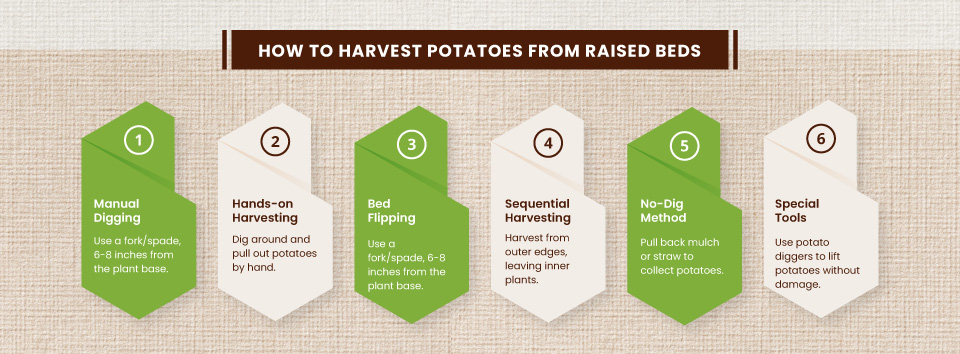
Harvesting of potatoes in raised beds can be carried out using several techniques, each with advantages. Here are the main methods:
1. Manual Digging: Use a garden fork, spade, or your hands to harvest potatoes. If you use a tool, insert it about 6-8 inches from the plant base to avoid damaging the potatoes. Lift and turn the soil gently to expose the tubers.
2. Hands-on Harvesting: Carefully dig around the plants with your hands. Gently pull out the potatoes, starting from the base of the plant and working your way outwards.
3. Raised Bed Flipping: Dismantle the raised bed or tip it over. Remove the sides of the raised beds carefully or tip the entire bed over to expose all the potatoes simultaneously.
4. Sequential Harvesting: Use a garden fork or spade to harvest potatoes from the outer edges. This method allows inner plants to continue growing, and it is best for getting new potatoes early in the season.
5. No-Dig Method: No tool is required for initial planting of potatoes. Cover potatoes below the soil surface with a thick mulch layer or straw. When harvesting, pull back the mulch to collect the potatoes.
6. Special Harvesting Tools: Use potato diggers or harvesting tools designed for harvesting crops in raised beds. These tools can lift potatoes without damaging them, making this a valuable method for large, raised beds.
Conclusion
Growing potatoes through raised bed gardening is a rewarding and efficient way to produce a bountiful harvest. The steps and the process mentioned in this guide will help you enjoy healthy homegrown potatoes with minimal effort. Embrace the benefits of raised bed gardening and be ready to transform your garden into a productive space.
FAQs
The common mistakes to avoid while growing potatoes are:
- Avoid planting too close
- Avoid planting too shallow
- Avoid planting too early
- Planting potatoes without eyes
- Overwatering after planting
To grow potatoes in the tire, follow the below steps:
- Select a sunny spot in your garden, yard, patio, or balcony
- Stack 2 or 3 tires, fill them with damp earth
- Compost it to just over half the depth of stacked tires
- Place 5 or 6 seed potatoes in the stack about 2 inches deep with its shoots facing up
No, it has not been tested, and it is not yet stated that planting potatoes in tires is safe. Several risks are involved, such as chemical leaching and heat absorption by tires.

